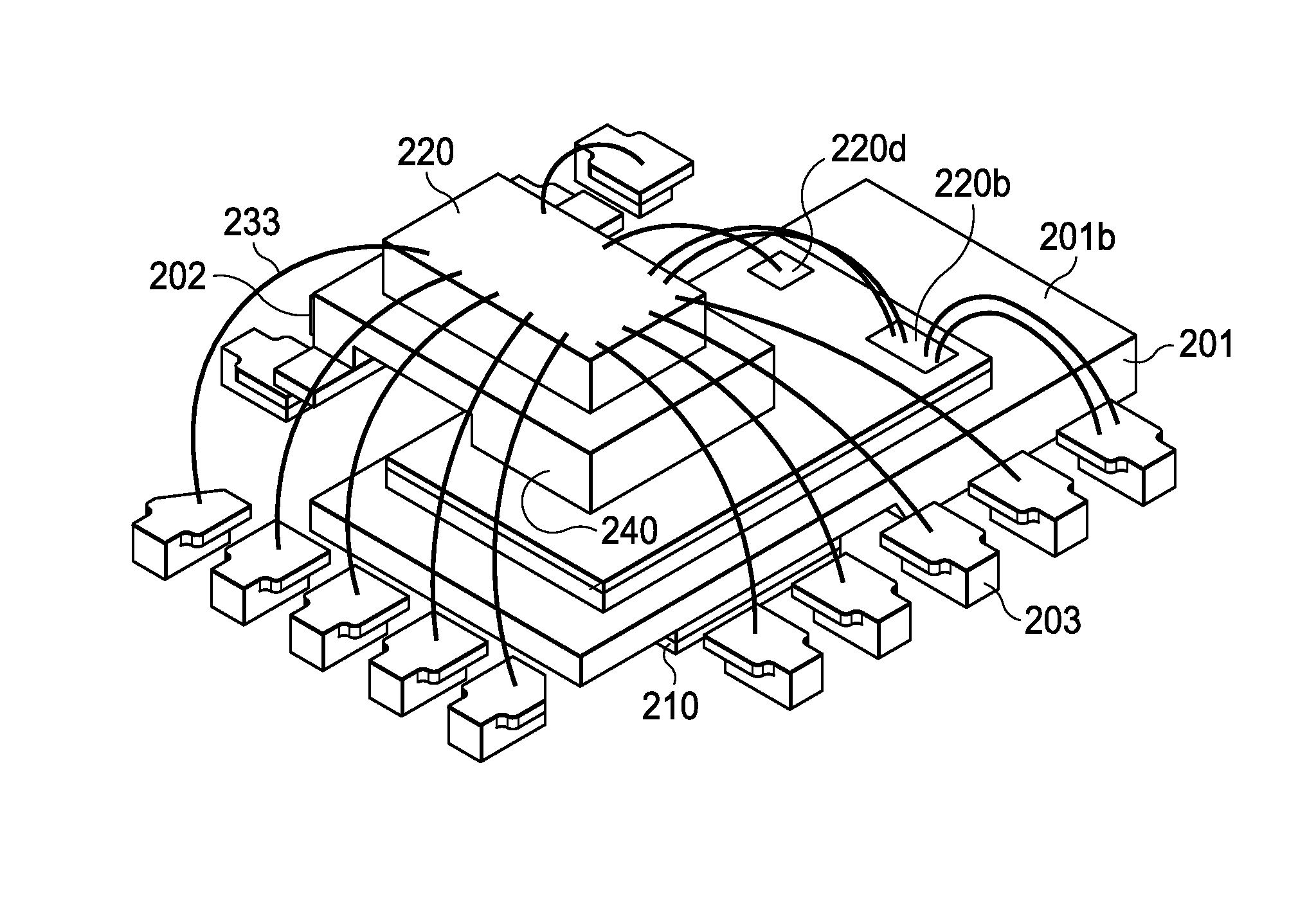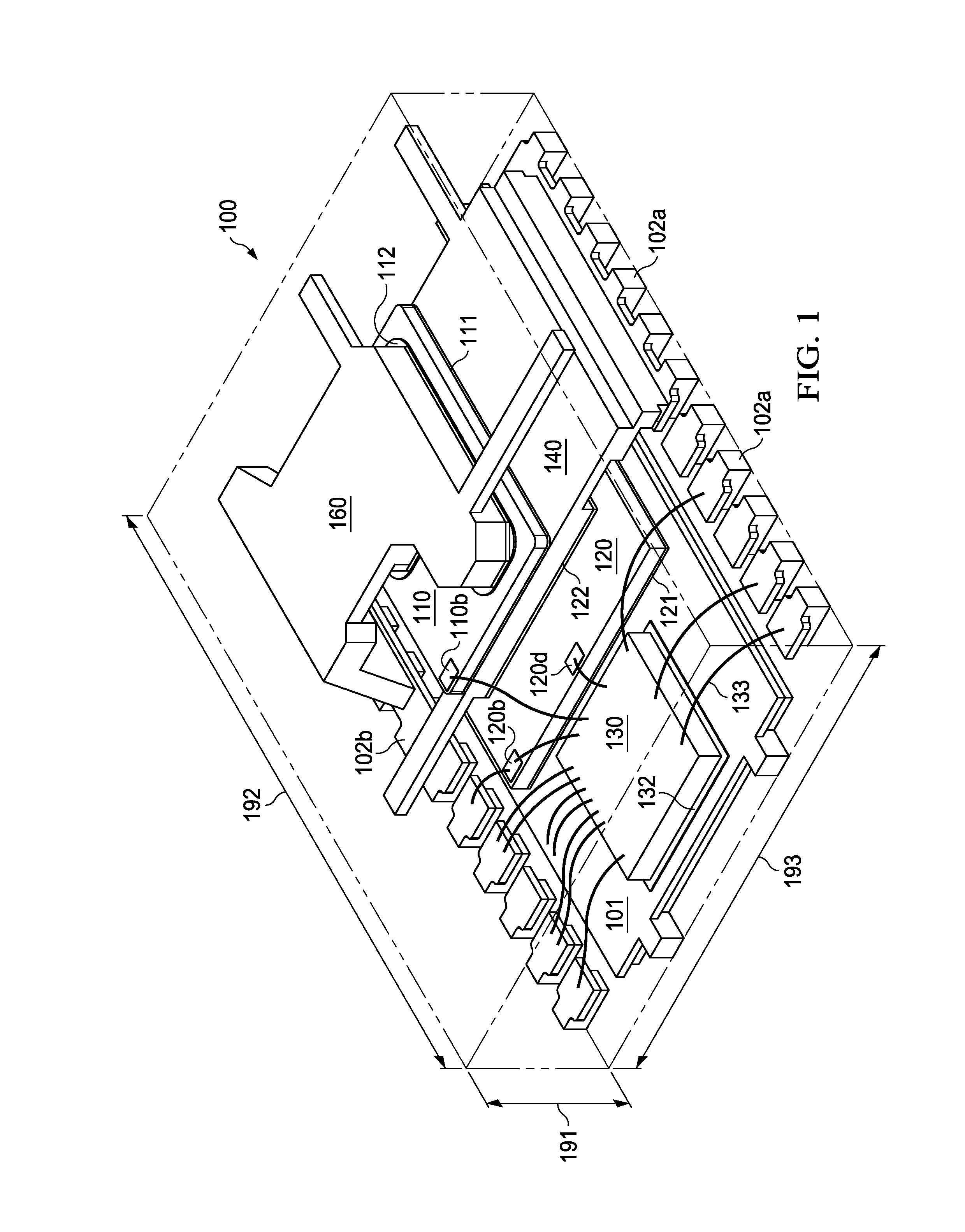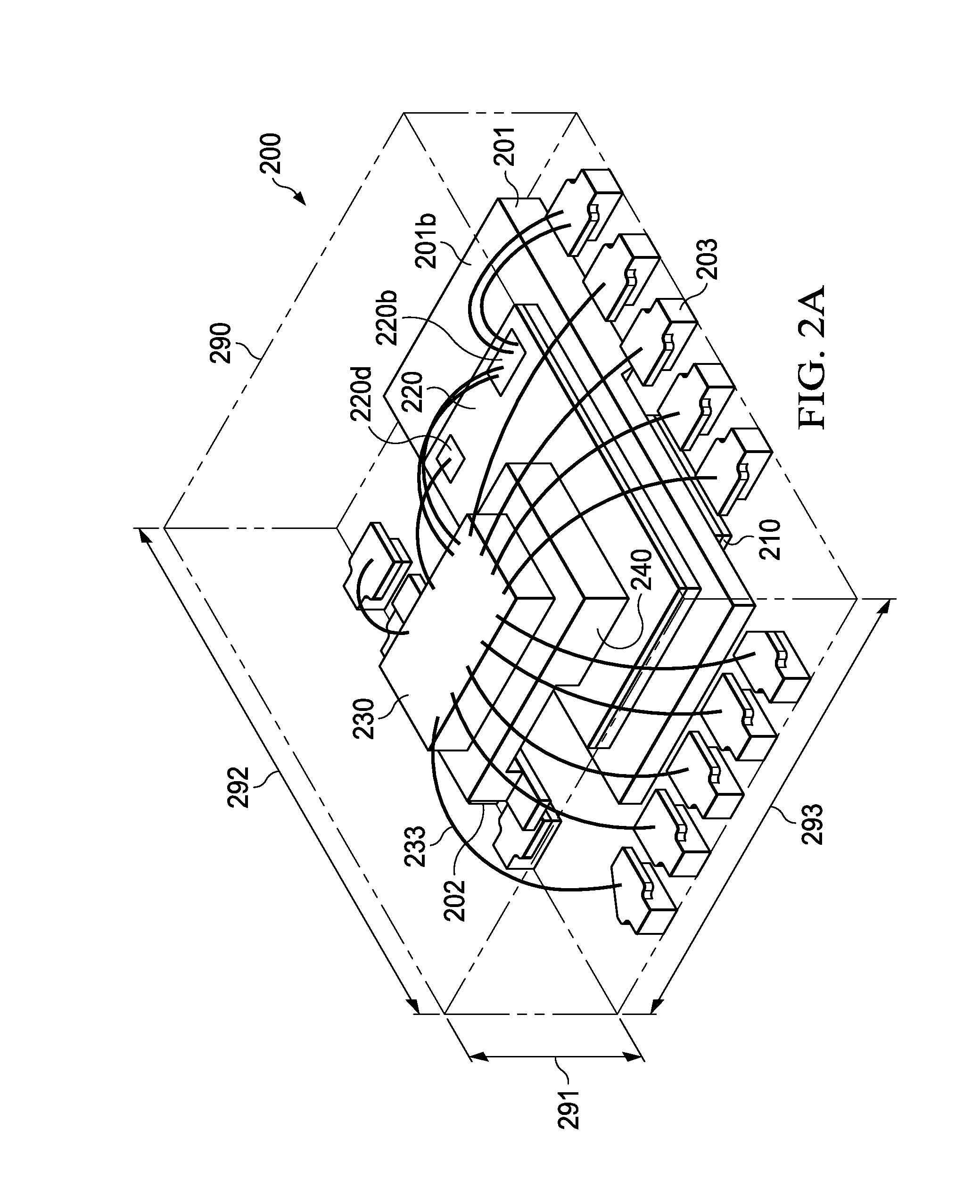Stacked synchronous buck converter having chip embedded in outside recess of leadframe
a synchronous buck converter and chip technology, applied in semiconductor devices, semiconductor/solid-state device details, electrical apparatus, etc., can solve the problems of significant parasitic inductance into the power circuit, excessive and significant risk of wire sweep and electrical shortening, so as to shorten the length of bonding wires and save the height of the stacking system, the effect of saving board real esta
- Summary
- Abstract
- Description
- Claims
- Application Information
AI Technical Summary
Benefits of technology
Problems solved by technology
Method used
Image
Examples
Embodiment Construction
[0028]FIGS. 2A and 2B illustrate perspective views of a power supply module generally designated 200 as an exemplary embodiment of the invention, FIG. 2A as a top view, FIG. 2B as a bottom view. For explanatory reasons, module 200 is shown with a transparent encapsulation 290. Preferred actual encapsulation uses a black-colored epoxy formulation for a transfer molding technology. The exemplary module of FIGS. 2A and 2B has a thickness 291 of 1.0 mm and a square-shaped footprint with a module length 292 of 3.0 mm and a width 293 of 3.0 mm. Other pads may be rectangular.
[0029]Visible through the transparent encapsulation is a metal leadframe generally suitable for Quad Flat No-Lead (QFN) and Small Outline No-Lead (SON) type modules. The leadframe includes a rectangular pad 201 and a plurality of leads 202 and 203. The pad surface visible in FIG. 2B is the first surface 201a, the pad surface visible in FIG. 2A is the second surface 201b. The leadframe is preferably made of copper or a ...
PUM
 Login to View More
Login to View More Abstract
Description
Claims
Application Information
 Login to View More
Login to View More - R&D
- Intellectual Property
- Life Sciences
- Materials
- Tech Scout
- Unparalleled Data Quality
- Higher Quality Content
- 60% Fewer Hallucinations
Browse by: Latest US Patents, China's latest patents, Technical Efficacy Thesaurus, Application Domain, Technology Topic, Popular Technical Reports.
© 2025 PatSnap. All rights reserved.Legal|Privacy policy|Modern Slavery Act Transparency Statement|Sitemap|About US| Contact US: help@patsnap.com



